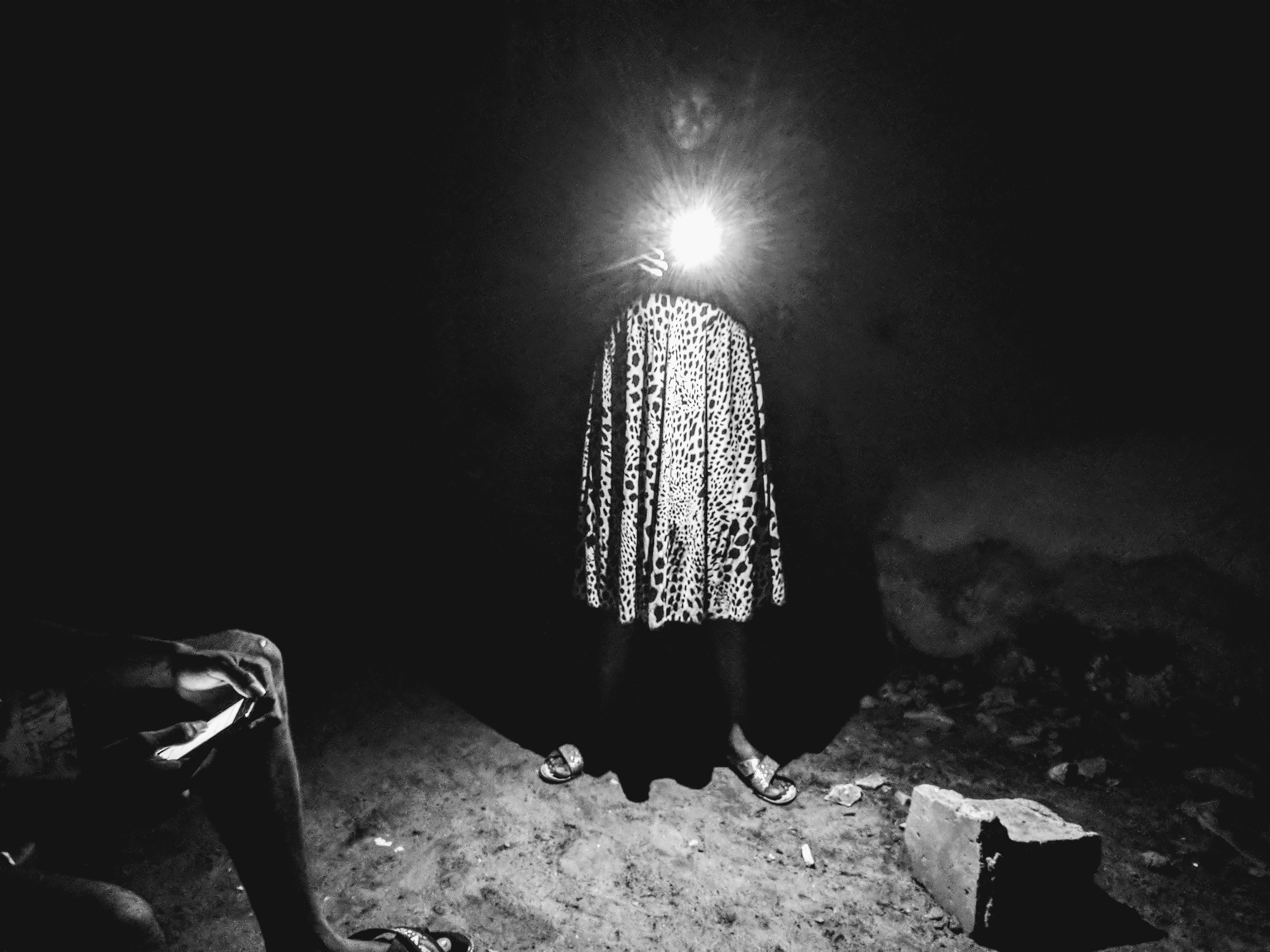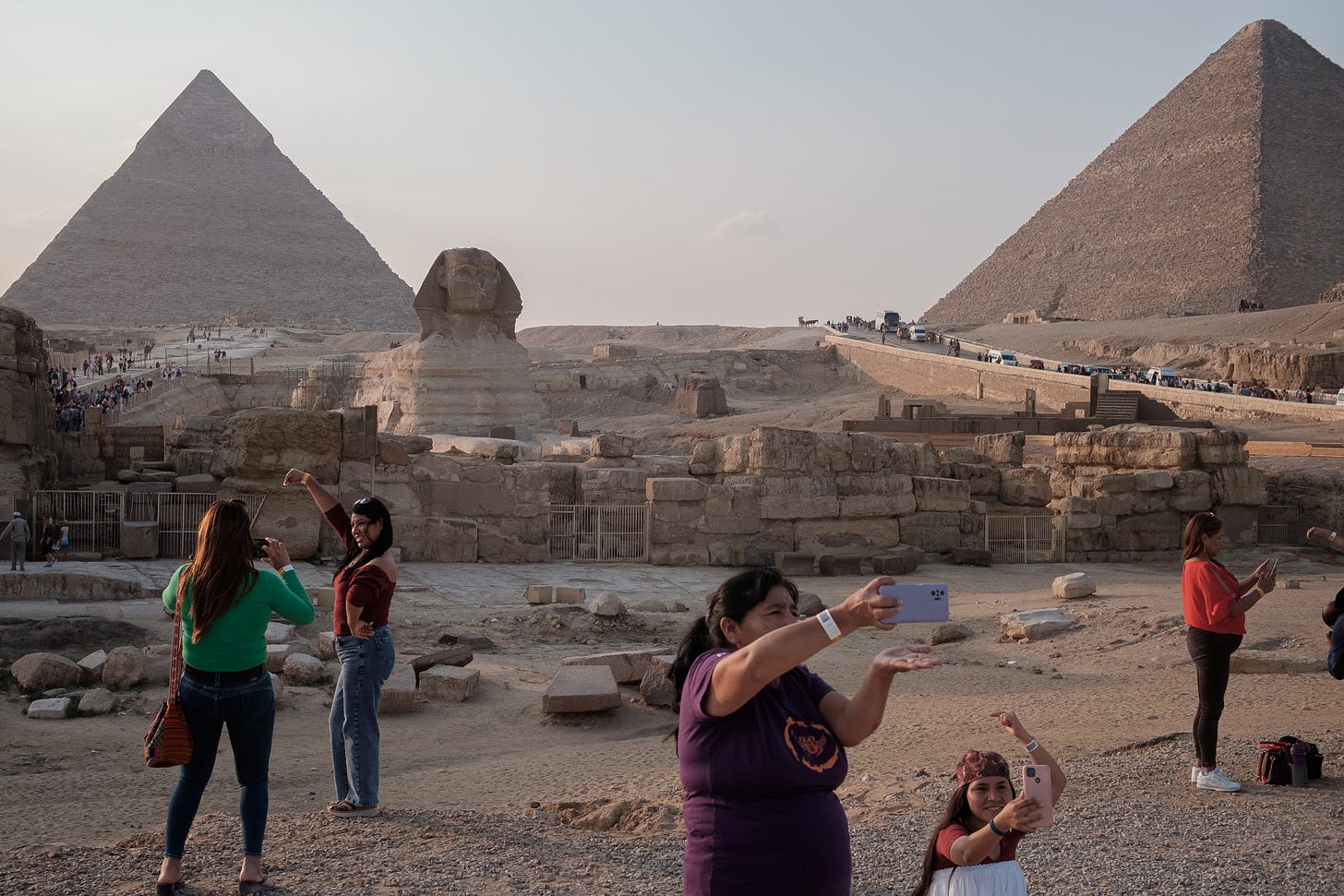A burst of light marks the area dividing the room from an enfolding darkness. In seeking out a source of luminosity, the camera acts like a pebble cast across a stream, spreading rays in every direction. There’s another light source, a phone, seen close to the leftmost edge of the picture, and held by nimble fingers. Given the angle of her gaze, and the tilt of her hands, the woman is likely focused on a phone as well. There’s a hint of severity on her face, seen also in the firm spread of her feet. The general area on which she stands is as uneven as the top of a hill, as though to indicate the degree of effort she’s put to remain standing.
— Emmanuel Iduma
“I need to step into the place where serendipity can meet with my way of seeing.”
This photograph was taken in Ojo, Lagos State, in 2020.
2020 was the International year for the celebration of Nurses and Midwives and it was the year of the COVID19 pandemic. In the same year, the image that gave way to this story won the grand prize for a photo contest organised by the John Hopkin University affiliate (JHPiego), NursingNow and International Council of Nurses in celebration of Nurses and Midwives all over the word. The same month I was announced as the grand prize winner, I was locked down with my family after visiting for a very short stay and only had access to my mobile phone camera. I immediately considered the possibilities of developing a story around the time by focusing on my mom who I have always wanted to photograph with hopes of making a book of her; as well as have a proof of my capacity to work around a health story to consequently sustain my relationship with the organising institutions and access other affiliate health NGOs.
This particular image was made the night Bridget, my mother, just returned from church and was trying to call her older sister after receiving news of her brother's death as a result of a long-term illness. He lived in Warri, Delta State, and his wife had refused his family members from seeing him for a long time. She handled his calls and access to the house. Bridget also lost one of her patients (also a friend) the previous day due to a misunderstanding that forced her to stop treatments.
This is one photograph that marks a crucial time for the subject as a nurse and care-giver. It also raises the question of how the lives of care-givers affect us. The important role they play in the world especially in the COVID19 year. It is also a photograph that celebrates her dual role as a caregiver to her family and her community.
My work is a protest against time as well as certain societal constructs or labels. I approach photography as a form of inquiry and projection of a personal ambition; like John Berger wrote, “Perspective centres everything on the eye of the beholder.” I also approach photography as an act of doing without thinking, and yet as a form of reflection.
I need to step into the place where serendipity can meet with my way of seeing or perspective. By photographing in black and white, I'm in the flow of rendering complexities and possibilities as though they are basic. Or perhaps it is just a very lazy approach as I do not really enjoy the process of editing.
— Chris Iduma
About Chris Iduma
Chris Iduma is a self-taught photojournalist and visual artist who uses photography to explore identity, history, and socio-political issues. Iduma is a MacDowell 2023 Fellow. He was a 2021 Leica Oskar Barnack New Comer Award nominee and a featured artist in the 2021 British Journal of Photography Open Walls Arles Exhibition. See more of his work on Instagram, and on East Wing.
LAST WEEK
— “People First,” by Aly Hazzaa
The photo was taken at the Giza Pyramids complex in Egypt where tourists take selfies with the great pyramids in the background. When I noticed all the people consumed by their phones trying to take a photo of themselves, I tried to fill all the spaces in the frame so I can portray what it feels like in that moment.
Writers of African descent based anywhere on the African continent are invited to apply for an editorial fellowship with Tender Photo, a newsletter on African photography.
This is the 94th edition of this publication, which also read on web (best for viewing images), and via the Substack iOS/Android apps.
TENDER PHOTO is a bi-weekly newsletter on African photography. Every Wednesday we feature a photograph and a short caption about it, and include a statement from the photographer. Every Friday, we publish commentaries or photo-essays in response to photographs previously featured on the newsletter. The most recent series is KINDRED. Our goal is to engage with early to mid-career African photographers by creating a platform in which they lead the cataloguing and engagement with their work.
Thank you for reading. If this newsletter was shared with you, consider subscribing, or forward to a friend. Please whitelist the newsletter to ensure you never miss it.







Light Up.
Succinctly, the image symbolises faith, a heart focused only on light and unyielding to a deep, unknowable darkness.
As though conjuring a new sun from the night of outer space, the image of a woman puntured by light, overflowing, as it seems, from her heart, interrupts the gloom. But for the source of light she gently holds, upon which her grim but confident gaze is set, not much would have been visible; not the lower region of her dress generously dotted with perky black spots resembling moths scrambling for illumination, nor her simply shod feet, stable on uneven ground and surrounded by debris; not a half-seen person partially lost in the shadows with fingers resting on bare legs and holding a phone whose bright screen attempts also to pierce the darkness.